Rome, Lazio, Italy, Sunday, October 14, 2012
Our breakfast this morning is pretty basic. Some croissants, toast, and cereal. This is supposed to be the nicest day of the three we are here in Rome so we are going to walk along part of the Appian Way. We are told it may rain later so we will carry our rain gear just in case.
The Appian Way was Rome’s first and best highway running from Rome to the southern Port of Brindisi on the Adriatic Sea. It was built in 312 BC and was the largest, widest road of its day. It ran in a straight line ignoring the lay of the land along the way. The Romans realized how important a road system was to controlling their vast empire and eventually built close to 30 roads from Rome to various places.
Our walk will take us about two miles from our BNB to a point where we can join the road. We will be walking along the original pavers of over two thousand years ago. Since it is Sunday, the road is closed to car traffic which will make it a much more pleasant outing. We find our way pretty easily, overshooting the entrance to the road a little bit, before backtracking to join it. We do not walk far before coming upon the small church of Domine Quo Vadis. When St. Peter escaped the Mammertine Prison, he fled along Via Appia before meeting Christ on this spot. The apostle asked “Lord, where are you going?” and Jesus replied ” I am going to be crucified anew”. Quo Vadis is latin for, where are you going.
We continue down the ancient road and then walk up towards the catacombs of San Callisto. In early Christian times, Christianity was illegal and the Christians were openly persecuted by the Romans. Burials were not allowed inside the Roman city as the pagan Romans just cremated their dead. Some of the more wealthy Christians allowed their properties to be used as burial sites. There are approximately 40 catacombs outside of the city of Rome. The volcanic tuff in the area was perfect for this as it was easy to dig into and the material hardened when it was exposed to air. The Christians buried many layers deep to get more mileage out of the few places that were available.
The catacombs of San Callisto is the largest such site in Rome. They are named after Pope St. Callixtus who was a former slave and criminal in ancient Rome. He was martyred and we see a sign which marks October 14th as the anniversary of that event. Today just happens to be October 14, so how cool is that?
We buy our tickets and wait for our guided tour. All the tours are conducted by priests from various places. Father Obeto will be leading our english tour and is from the Phillipines. This is sacred burial ground and there will not be any pictures taken so if you are interested, there are probably some to be found on google. We descend immediately into the catacombs. There are four levels of catacombs with the one closest to the ground being the oldest. Over 500,000 people were buried here. The Capella die Papi contains the tombs of nine Popes from the third century. The lifespan of a Pope was short in those days to mostly to Assassins. On August 6 of the year 254, assassins hired by Emperor Valerian, attacked and killed Pope Sixtus II and 4 of his deacons while he was giving Mass in these catacombs. The Roman empire was losing ground in that time and many Emperors feared that the growing Christian movement was a threat to their power and Roman ways.
We descend another level on the tour. About 40% of the buried were children and the small graves are noticeable everywhere. Each level of catacomb had several layers of graves which were craved out of the walls one on top of another. The spaces are just large enough for the bodies to fit. This was for practical reasons. The bodies were stuffed into the spaces, like was thrown in and the grave was sealed tight. This allowed little air into the graves and helped in keeping the odor manageable.
We see a grave of a female saint whose name eludes me at the moment. She was struck three times by the executioners blade, once in the neck and was able to survive, holding her head tight. The law forbid a fourth strike so she was finished off by other means. We do not see any bones along the tour because as the Father said, tourists were slowly taking home souvenirs. That is pretty creepy and morbid. There are some beautiful paintings in some of the larger tomb areas and we also see displays of oil lamps and other artifacts discovered here. The lamps are all small and were used as guiding lights back to the surface. In 313, Emperor Constantine legalized Christianity and the use of the catacombs stopped as they could now be buried on the surface. The catacombs became pilgrimage sites because of the martyrs and Popes that were buried here. In the 800’s, the barbarians were invading and ransacking the lands. They ransacked the catacombs looking for treasures that may have been buried with the dead. Most of the bones in the graves were thrown about and the place remained in disarray. The catacombs were slowly forgotten and lay undiscovered for a thousand years. This one was rediscovered in the mid 1800’s by someone walking around who kicked at some dirt and found a small tomb. We found the tour very interesting and the history told by Father Obeto was very fascinating.
Exiting back into daylight, we head back towards the Appian Way. We come across the Church of St. Sebastian, where a mass is going on. There are also catacombs here but they are closed on Sundays. We see the side chapels of the church. St. Sebastian was appointed by Emperor Diocletian to be an elite guard. The Emperor was unaware that Sebastian was a Christian. This came out when he was asked ( like all government officials) to worship the Roman Gods and Sebastian refused. The Emperor ordered him bound to a stake and shot with arrows. Miraculously, he survived this but did not stay out of Rome or become silent. When he returned to proclaim the righteousness of his faith, he was captured and beheaded. There is a marble piece in the church of the Saint and we have seen his likeness in paintings and sculptures throughout our travels.
From the church we walk past a temple of Romulus, Emperor Maxentius’s son who died young. The complex also included the Circus of Maxentius which once held 10,000 spectators. The obelisk in the famous Piazza Navona in Rome once stood here. Passing the tomb of Cecilia Metella, we turn off the Appian way and head to a metro station about a mile or so away.
We get off the metro at the Barberini stop so we can visit the Capuchin crypt. It was listed in guidebooks as a give a donation if you want entry but has now changed to a mandatory buy a ticket attraction. We first tour the museum which has interesting histories of different Capuchin Saints. Carol is sponging as I call it, absorbing as much as she can. There are also artifacts from various Capuchin places and times.
Finishing in the museum, we enter the crypts, which were the reason we came here. The bones were brought here from other places and there is no definitive history on which monk accomplished the task of getting permission for and arranging the bones in the several chapels here. There are over 3700 bones used in the displays. It is fascinating and weird at the same time. Many of the patterns use the same type of bones respectively, for example, pelvis bones in one back wall of a chapel and jawbones as ceiling decor.
When we leave, we start to wander towards the colosseum by way of the Trevino fountain area. The crowds get a little thicker but the walking is pretty easy and not as far as we thought. We stop in one church near Trajans Column. It is circular inside with a beautiful painted dome and some nice mosaics.
When we exit and walk out to the street, there is something very different from our first visit here, two years ago. There is no traffic in the street. We think maybe because it is Sunday that they close the area off to vehicle traffic. The street is full of people walking and biking, all enjoying the beautiful day and the ancient surroundings. The colosseum is in front of us, the forum on the right, and Trajans market on the left. This whole area was the heart of the Roman civilization. We enjoy our slow walk and half circle the colosseum before turning up the street where the restaurant is.
We have an early dinner eating again at Trattoria Luzzi, this time getting cannelloni, and spaghetti arrabiata to go with our antipasto and wine. The cannelloni is meat filled and excellent. The waiters are friendly and we like the casual atmosphere eating outside today.
After dinner, we have our walk home. It is around 1730 and we are able to check out the large building we saw last night. Entering from the side, we discover it is the Church of San Giovanni in Laterano. This was one of Rome’s most important churches throughout medieval times and was built by Constantine who was the first Christian Emperor. He is the one that legalized Christianity and enabled the Christians to stop using the catacombs we saw. So this unexpected visit ties right in to the beginning of our explorations today.
The church itself is quite large and contains some beautiful mosaics, the tomb of Pope Martin V, and a statue of San Giovanni Battiste (St. John the Baptist). The nave is lined with very large statues of important saints such as St. Peter and St. Christopher. out front is a statue of Emperor Constantine and a building next to the church houses the Holy Stairs said to have been walked up by Jesus. Pilgrims come and walk up these stairs on their knees. We are glad that we got to see this important church.
The rest of the walk takes us back through the gate of San Giovanni and down the main drag to our BNB. It has been a nice day especially since they are calling for heavy rain tomorrow so we are happy we were able to walk and see some great sights.
CNC
“The journey of a thousand miles must begin with a single step”- Lao Tzu
The journey of a thousand miles begins with cash “- Unknown
Expenses
16E- Catacombs of San Callisto
3E- metro to Barberini
12E- Capuchin Museum and Crypt
20.50E – antipasto Misto, cannelloni, pasta arribiata, wine, bread
89E – BNB
Miles Walked – 10.3 Miles
- Domaine Quo Vadis Church
- Church of San Sebastian
- San Sebastian
- Outside San Sebastian
- Guarding the Estates
- Tomb of Cecilia Metella
- Along the Appian Way
- Old Facades
- No Traffic
- Capuchin Crucifixes
- Chapel With Skulls
- Bone Art
- Jaw Bones
- Lamp of Bones
- Circular Church
- Painted Dome
- Mosaics
- Near Trajans Market
- Trajans Market
- Colosseum No Cars
- Altar and Mosaics
- Side of San Giovanni Church
- San Giovanni Mosaics
- Tomb of Pope Martin V
- San Giovanni Nave
- Statue of St. Peter
- Statue of Emporer Constantine
- Front of San Giovanni Church
- Ancient Walls
- Gate of San Giovanni
- Ancient Communication Device
- Under the Gate

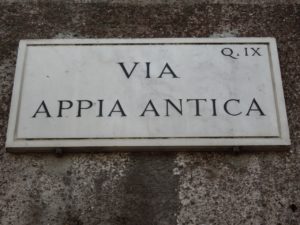


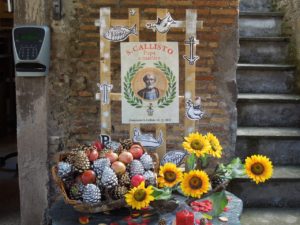

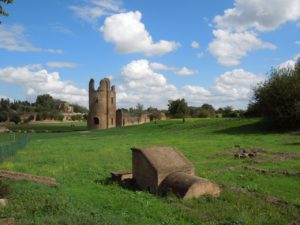
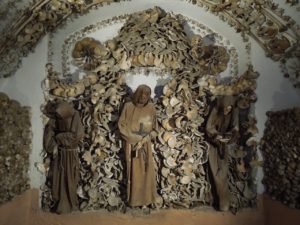
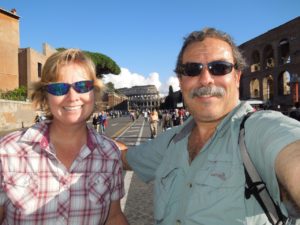

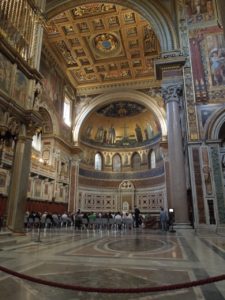
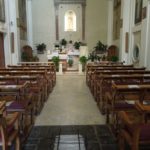

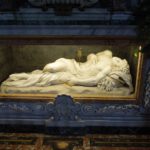

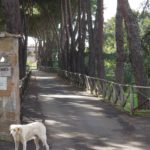
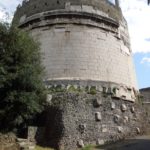

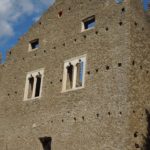
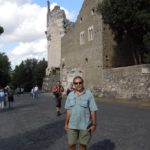

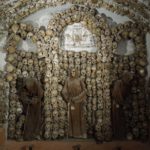

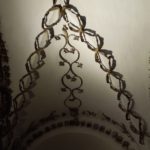

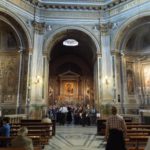



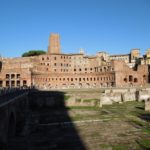




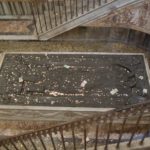
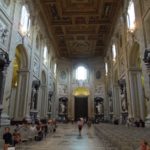

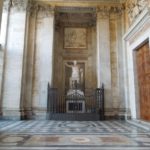




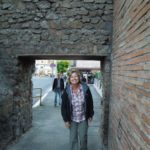
No Comments Yet